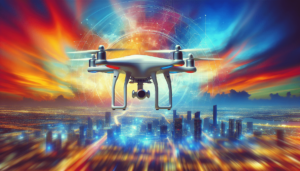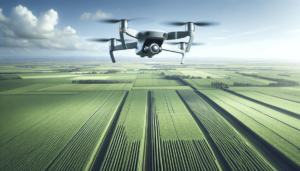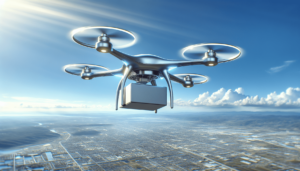Have you ever paused to consider the vastness of drone technology and how its wings have spread into industries you might not expect? In a world constantly seeking innovative advancements to streamline operations and cut costs, drones have emerged as silent commanders of the skies. No longer confined to military landscapes or the burgeoning realms of photography and film, these aerial devices have found applications across a wide spectrum of industries.
My intent here is to guide you through an exploration of various sectors leveraging drone technology to stay ahead of the curve, potentially in ways that might surprise you. The rise in adoption is not merely a fleeting trend but a deep-seated integration into the operational fabric of these industries.
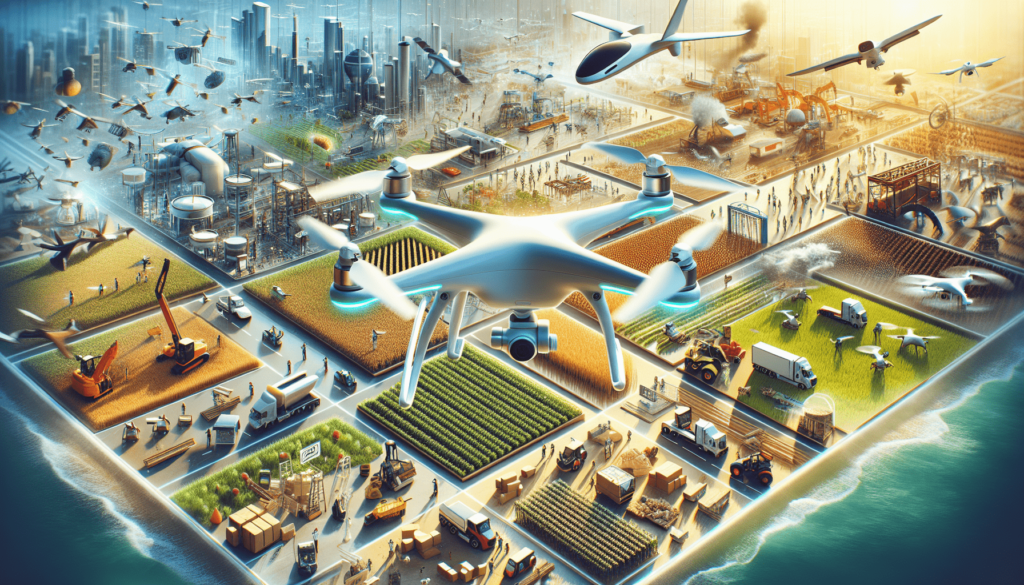
The Agriculture Landscape
Drones in Crop Monitoring
In agriculture, drones have evolved from pricey gadgets to indispensable tools. The ability to oversee vast plots of land with minimal human intervention is a game-changer for many farmers. Equipped with multispectral sensors, drones can capture data crucial for assessing plant health, identifying watering needs, and detecting plant stress early. They provide a bird’s eye view of pest infestations and soil conditions, helping farmers make informed decisions efficiently.
Precision Agriculture and Its Benefits
Precision agriculture leverages drone technology to allow farmers to apply resources judiciously. By using drones for mapping and surveying, I can dictate variable rates of fertilizer application, targeting specific areas that need more nutrients while conserving resources where they’re not needed. This precision not only enhances yields but also reduces waste, which is both cost-effective and environmentally friendly.
| Benefits of Drones in Agriculture | Explanation |
|---|---|
| Enhanced Monitoring | Drones offer detailed aerial imagery for better monitoring. |
| Efficient Resource Use | Allocates fertilizers and water precisely where needed. |
| Early Problem Detection | Identifies issues like pests early to mitigate risks. |
Energy Sector: Beyond Traditional Boundaries
Inspection of Energy Infrastructure
In the energy sector, maintaining infrastructure is critical, yet extraordinarily labor-intensive. With drones, conducting inspections of oil and gas pipelines, wind turbines, or solar panels becomes significantly less cumbersome. These devices can reach places that would otherwise need elaborate scaffolding or visible inspection by human personnel, saving both time and revenue.
Renewable Energy System Maintenance
As renewable energy investments grow, maintaining these systems becomes even more necessary—and drones step perfectly into this role. I find that photovoltaic panel systems and large wind turbines benefit greatly from drone inspections since the drone can efficiently capture potential operational inefficiencies such as debris or malfunctions without halting operations. For turbines, drones offer a non-invasive way to monitor and maintain crucial components worn down by time or natural elements.
| Energy Infrastructure Use of Drones | Advantages |
|---|---|
| Pipeline Inspections | Reduces human labor and risk exposure. |
| Wind Turbine Maintenance | Detects faults without interrupting operations. |
| Solar Panel Monitoring | Quickly finds inefficiencies to resolve promptly. |
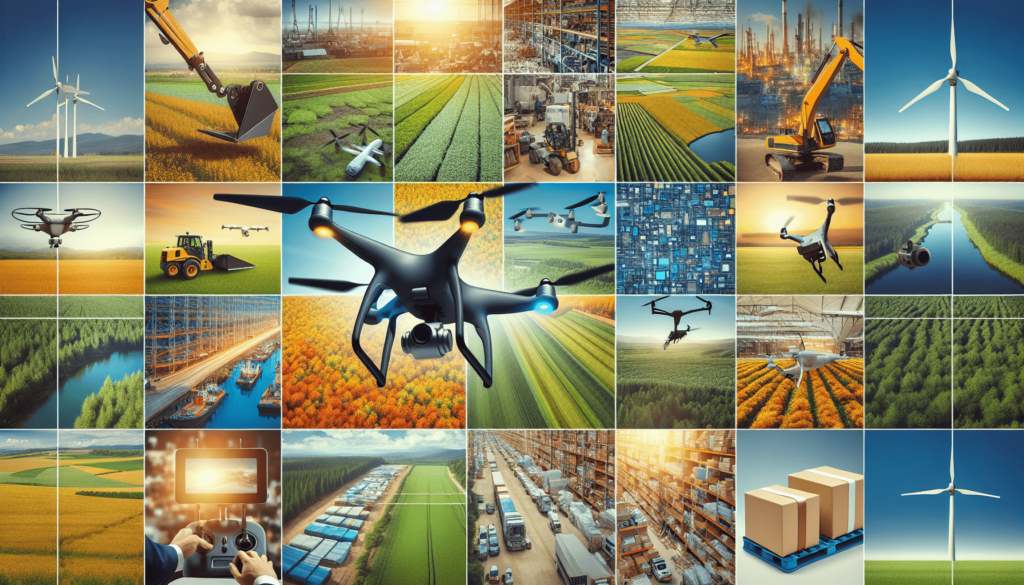
The Role of Drones in the Insurance Industry
Risk Assessment and Damage Evaluation
Insurance companies have found a novel ally in drones for assessing risk and evaluating damages. Previous assessments requiring physical inspections of properties can now be streamlined with aerial views provided by drones, offering a comprehensive look at rooftops and other high-risk zones. Particularly after catastrophic events such as hurricanes or fires, drones offer a quicker, safer option for surveying widespread damages.
Fraud Prevention and Fast Claims Processing
For fraud prevention, drones provide indisputable, time-stamped visual evidence of damages, allowing firms to differentiate between authentic claims and fraudulent ones. The study goes beyond mere cost savings—speed in claim processing leads to enhanced customer satisfaction. For me, having access to a real-time overview of properties drastically cuts down on assessment time and improves operational efficiency.
| Insurance Applications of Drones | Benefits |
|---|---|
| Risk Assessment | Provides accurate, quick property assessments. |
| Damage Evaluation | Faster and safer determination of post-disaster losses. |
| Fraud Prevention | Offers solid visual evidence for claim validations. |
Drones in Conservation and Wildlife Monitoring
Environmental Protection Aspects
Drones have flown into the realm of conservation, providing unmatched insights into wildlife monitoring. They navigate sensitive ecosystems without the disruption often caused by human intrusion. Using thermal imaging and other sensor technologies, drones collect data on animal populations, migration patterns, and habitat encroachments, enabling conservationists to act efficiently in protecting endangered species.
Data Collection for Research
The deployment of drones reduces logistical hassles for researchers, markedly enhancing their ability to gather accurate scientific data. Drones are increasingly outfitted with software capable of artificial intelligence-driven analysis. For me, the opportunity to capture precise data during peak periods of animal activity adds a valuable layer of research capability that manual observation simply cannot replicate.
| Conservation Uses of Drones | Positive Outcomes |
|---|---|
| Wildlife Monitoring | Reduces human impact on delicate ecosystems. |
| Data Analysis | Gains precise data collection for environmental research. |
The Expanding Frontiers of Drones in Retail
Inventory Management and Surveillance
In retail, managing stock seamlessly is paramount, and drones are filling in the gaps. Large warehouses employ drones to perform tedious inventory checks that would be overwhelming or costly if completed by human staff. These devices easily reach high storage racks to scan items and ensure appropriate stock levels, cutting down the time taken and minimizing errors.
Enhancing Delivery Operations
By now, you’ve likely heard discussions about drones delivering parcels directly to your doorstep. While regulatory and logistical challenges remain to be fully ironed out, the impetus behind such initiatives emphasizes the reduction in delivery times and operational costs. Drones provide a viable solution for last-mile delivery, proving particularly effective in remote locations where traditional delivery is either inconvenient or infeasible.
| Retail Advances Through Drones | Key Benefits |
|---|---|
| Inventory Control | Heightens accuracy and efficiency in stock control. |
| Delivery Optimization | Minimizes delivery delays, especially in isolated areas. |
Conclusion
In the changing landscapes of contemporary industries, drones have emerged as indispensable allies across sectors we might not have previously imagined. From tending to agriculture fields and securing energy systems to evaluating insurance claims, conserving wildlife, and redefining retail operations, drones continue to spread their wings far and wide. Their adoption exemplifies not just a quest for efficiency, but an overarching strategy to redefine industry frontiers and stay ahead in a world where technological advancements dictate success. By embracing such innovations, industries are not merely keeping pace, but setting new benchmarks for excellence.
When you think about the seamless operations, cost savings, and strategic advantages rendered by these aerial aides, it’s impressive how much has changed in such a short time—and how much potential still remains untapped. As I reflect on these uses, I realize how integral drones have become in enhancing capabilities and creating new opportunities across the board.
